Silicon solar cells and modules dominate the photovoltaic market, but the new surface created by half-cell cutting will intensify carrier recombination and affect cell efficiency. Edge passivation technology can solve this problem. Al2O3 thin films have high stability, high dielectric constant, and low refractive index. They have application prospects in optical and optoelectronic devices and are often used for silicon surface passivation. The efficiency of cells deposited with Al2O3+annealing was further increased by 0.021% to 0.119%, and the module power was further increased by 0.68 W to 3.76 W.
RS-ALD technical principle
A rotating space atomic layer deposition (RS-ALD) method is used to prepare Al2O3 thin films. This method optimizes the process conditions and prepares high-quality Al2O3 thin films at a process pressure of 4 Torr and a trimethylaluminum (TMA) flow rate of 300 sccm.
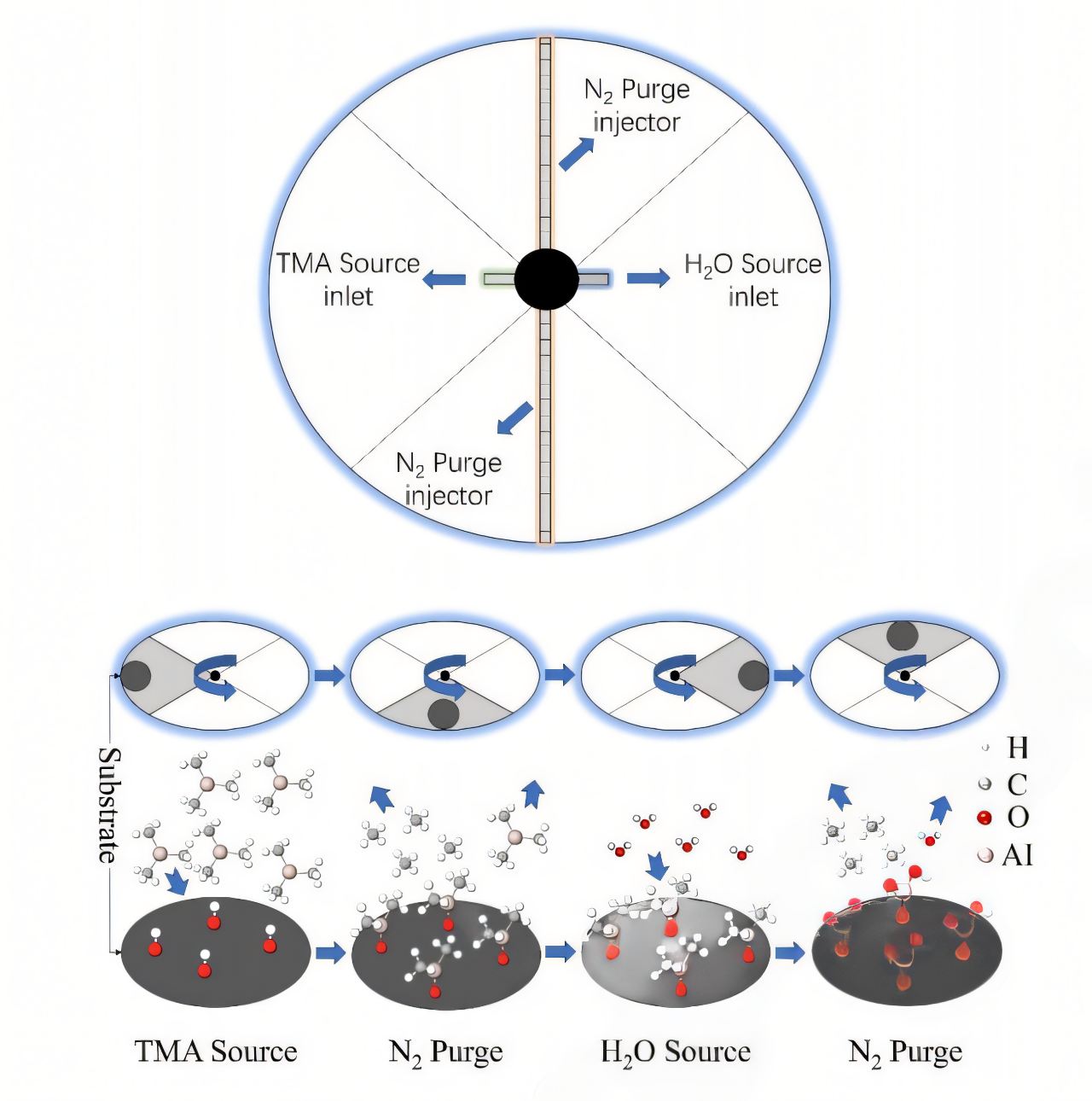 RS-ALD reaction mechanism of Al2O3 film preparation
RS-ALD reaction mechanism of Al2O3 film preparation
Experimental steps:
Substrate preparation: including impurity removal, cleaning and surface activation.
Gas introduction: TMA and deionized water are introduced as precursors respectively, isolated by high-purity nitrogen.
Gas reaction: The substrate is exposed to aluminum and oxygen precursors on a rotating tray in sequence to form an Al2O3 film.
Overflow discharge: Unreacted precursors and by-products are discharged from the reaction chamber.
Repeated deposition: Repeat the above steps until the desired film thickness is achieved.
Al2O3 film sample preparation
Wafer specifications: P-type single crystal silicon wafers with a thickness of 150 μm, a resistivity of <1.5 Ω-cm, and a crystal orientation of <100> are used. Cleaning process: The silicon wafer undergoes a series of ultrasonic cleanings, using deionized water, isopropanol, ethanol, and deionized water in sequence, with each cleaning time ranging from 5 to 30 minutes. Drying: The cleaned silicon wafer is dried using high-purity nitrogen and then transferred to the RS-ALD reaction chamber.
Characterization of Al2O3 films
Thickness measurement: Film thickness was measured using spectroscopic ellipsometry to determine the deposition rate. Crystal structure analysis: The crystal structure of the film was analyzed using an X-ray diffractometer. Surface morphology and roughness: The surface morphology and surface roughness of a 3μm×3μm area were characterized using an atomic force microscope in contact mode. Minority carrier lifetime: The effective minority carrier lifetime of the silicon wafer was measured using a minority carrier lifetime meter in quasi-steady-state (QSS) photoconductive mode.
Edge passivation of TOPCon cells
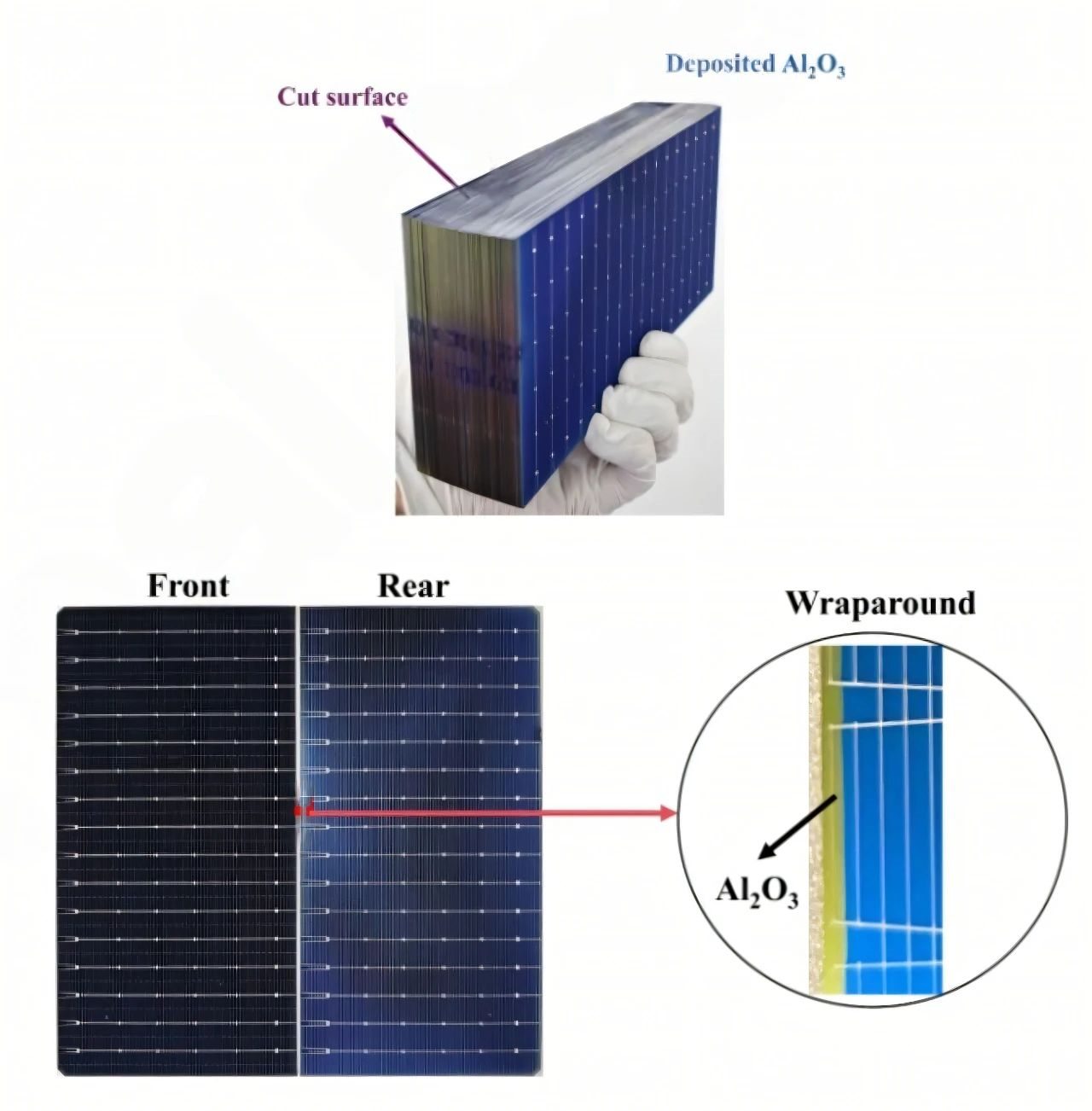
TOPCon cell edge deposition of 40 nm Al2O3 film
RS-ALD technology: Use rotating space atomic layer deposition (RS-ALD) technology to deposit a 40 nm thick Al2O3 film on the edge of the solar cell.
Deposition area: The deposited Al2O3 film covers the cut edge of the cell, with a wrapping area of about 1 mm, and has little effect on other parts of the cell.
Optimization of Al2O3 film process parameters
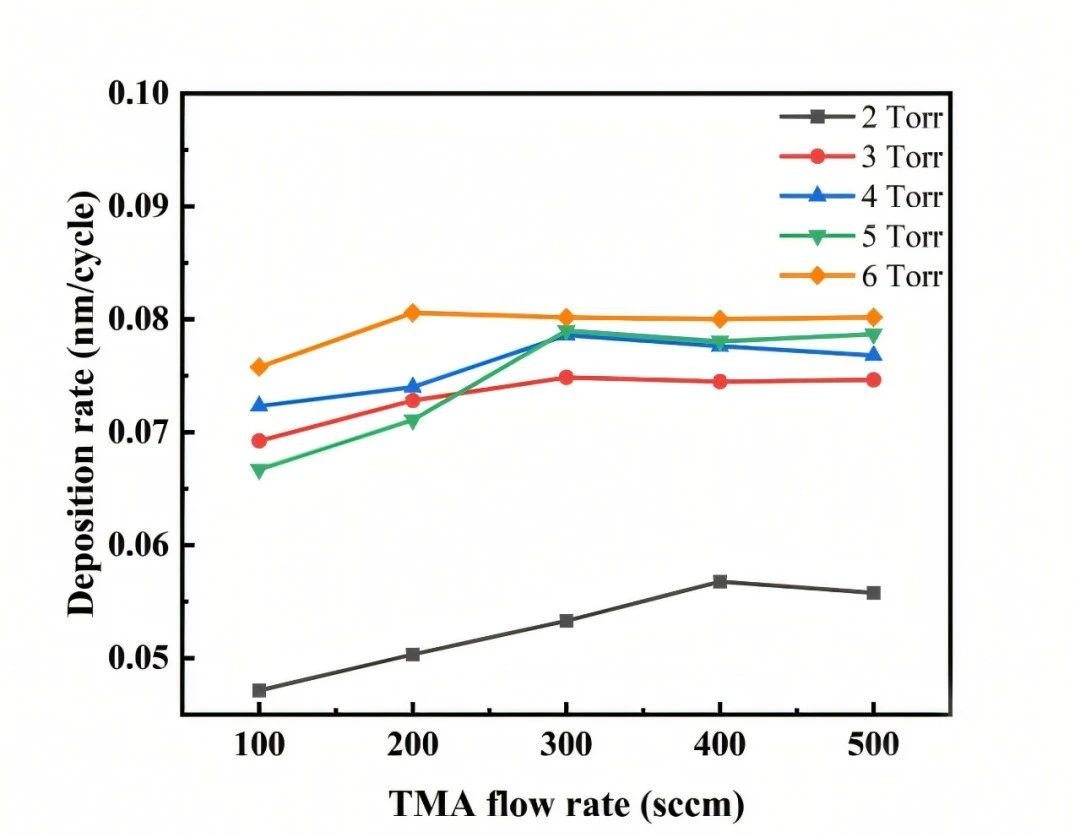
Deposition rate of Al2O3 films at different TMA flow rates and process pressures
 Deposition rate of Al2O3 film under different process pressures
Deposition rate of Al2O3 film under different process pressures
Relationship between deposition rate and process pressure: Between 2 Torr and 3 Torr, the deposition rate increases significantly (about 32%). From 3 Torr to 4 Torr, the deposition rate increases further (about 5%). After exceeding 4 Torr, the deposition rate does not increase significantly.
Optimal process conditions: At a process pressure of 4 Torr and a TMA flow rate of 300 sccm, the deposition rate and uniformity are optimal. The film under this condition not only has a high deposition rate, but also has a closer deposition rate at positions close to and far from the center of the circle, indicating better film uniformity.

Uniformity of Al2O3 film
Best uniformity: At a process pressure of 4 Torr, the deposition rates near the center and far from the center are closest, 0.0786 nm/cycle and 0.0780 nm/cycle respectively, indicating that the uniformity of the film is the best.
Relationship between uniformity and process pressure: As the process pressure increases, the uniformity of the film gradually improves. The best uniformity is achieved at 4 Torr. After exceeding 4 Torr, the uniformity continues to improve but the increase is small.
RS-ALD technology Al2O3 characterization analysis-crystal structure
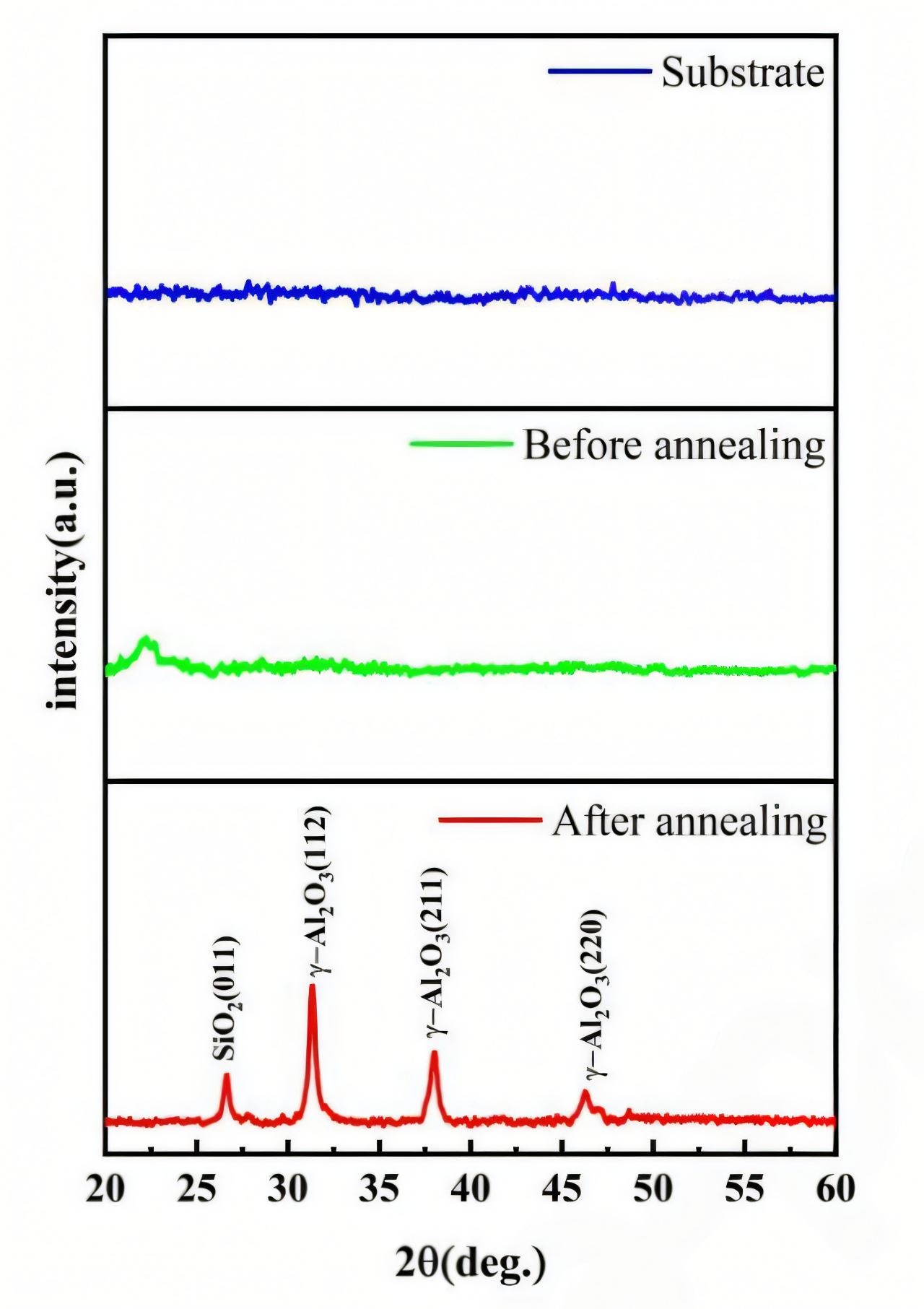
Crystal structure changes of Al2O3 film before and after annealing
Crystal structure transformation: Annealing treatment transforms Al2O3 film from amorphous state to γ-Al2O3 polycrystalline phase. This transformation helps to improve the stability and passivation effect of the film.
SiO2 peak: The peak of 2θ=26.7° corresponds to the (011) crystal plane of SiO2, which is related to the diffusion of oxygen in the substrate and film layer.
γ-Al2O3 peak: The peaks of 2θ=32.1°, 37.7° and 45.8° correspond to the (112), (211) and (220) crystal planes of γ-Al2O3, respectively, indicating that annealing treatment promotes the crystallization of Al2O3 film.
RS-ALD technology Al2O3 characterization analysis-surface morphology
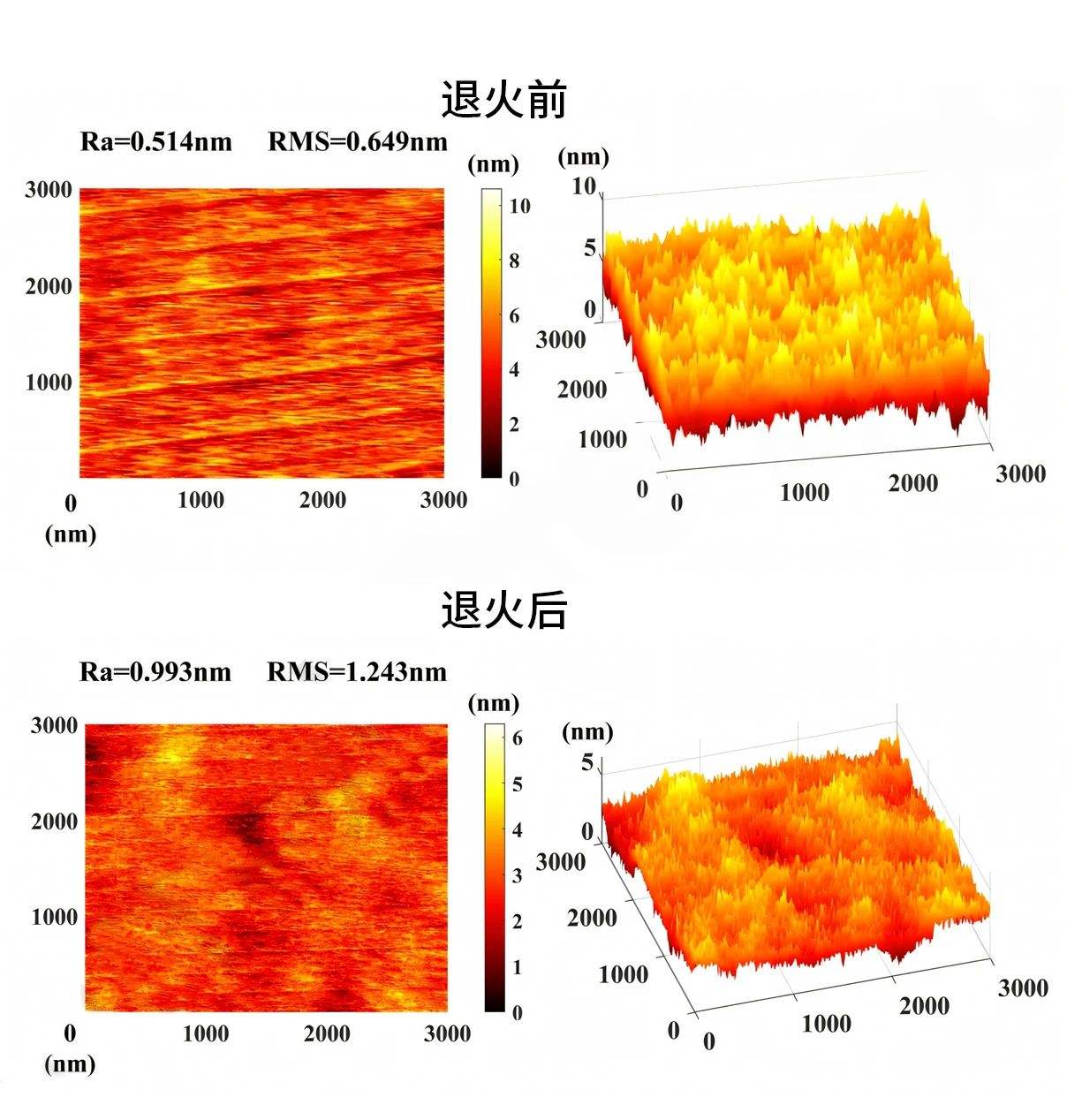
Surface morphology of Al2O3 film before and after annealing
Before annealing: The surface of the Al2O3 film before annealing presents a needle-like structure, which is clearly visible in 2D and 3D images, and the surface is relatively smooth.
After annealing: Annealing treatment changes the surface morphology of the film from a needle-like structure to a valley-type cluster, and the surface becomes rougher. This change indicates that annealing treatment promotes the grain growth and densification of the film.
Increased surface roughness: The surface roughness of the Al2O3 film after annealing increases significantly, which helps to improve the optical properties and mechanical stability of the film. The rough surface can increase the scattering of light and improve the absorption efficiency of light, thereby improving the performance of solar cells.
RS-ALD technology Al2O3 characterization analysis-passivation performance
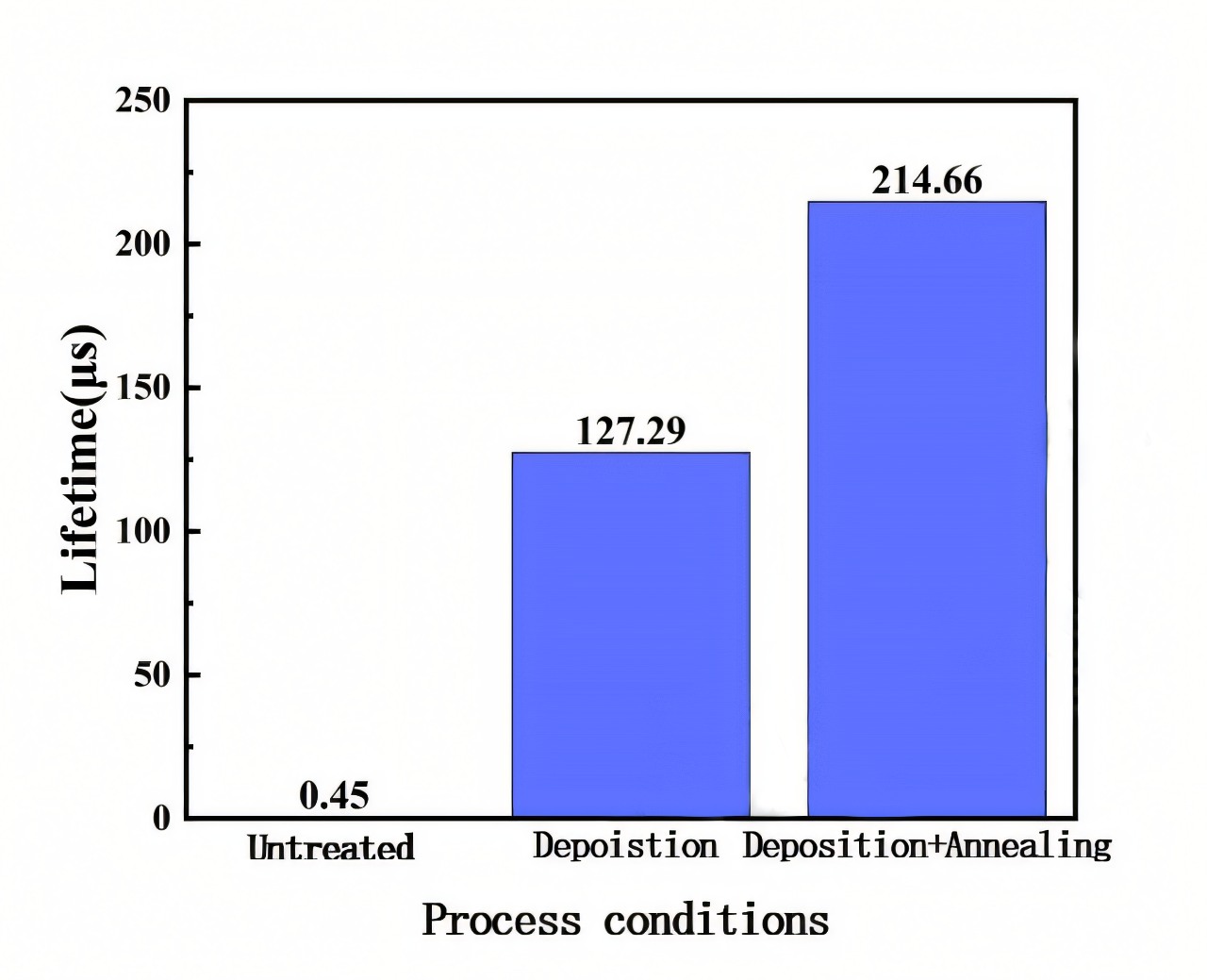
Minority carrier lifetime of silicon wafers passivated by Al2O3 film
Passivation effect: The deposition of Al2O3 film significantly improves the minority carrier lifetime of silicon wafers, indicating that it has a good surface passivation effect.
Annealing enhancement: Annealing treatment further enhances the passivation effect of Al2O3 film and significantly improves the minority carrier lifetime, which indicates that annealing treatment can activate the negative fixed charge in Al2O3 film, improve the quality of the contact interface between film and silicon wafer, and reduce surface recombination.
Performance improvement: The improvement of minority carrier lifetime is directly related to the performance improvement of solar cells, especially the improvement of open circuit voltage (Voc) and fill factor (FF), thereby improving the efficiency of the cell.
TOPCon cell edge passivation effect

Summary of TOPCon solar cell performance improvement
Deposition of Al2O3 only: Deposition of Al2O3 film alone can significantly improve the performance of the cell, with Voc, FF and efficiency increased by 1.7 mV, 0.23% and 0.098% respectively, and the module power increased by 3.08 W.
Deposition of Al2O3 + annealing: Annealing treatment after deposition of Al2O3 film further improved the performance of the cell, with Voc, FF and efficiency increased by 2.2 mV, 0.34% and 0.119% respectively, and the module power increased by 3.76 W.
Annealing effect: Annealing treatment significantly improved the performance of the cell, especially in terms of improving Voc and FF, indicating that annealing treatment can activate the passivation effect of Al2O3 film, reduce surface recombination, and improve the efficiency of the cell.
High-quality Al2O3 film was prepared by rotating space atomic layer deposition (RS-ALD) technology and applied to edge passivation of TOPCon solar cells.
After annealing treatment, the cell efficiency was further increased by 0.021% to 0.119%, and the module power was increased by 0.68 W to 3.76 W. These results fully demonstrate the key role of edge passivation in improving the performance of solar cells.